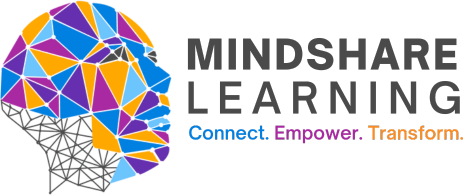 By Tim Gard, TDSB Educator & MSL Report Contributing Writer
By Tim Gard, TDSB Educator & MSL Report Contributing Writer
I got excited about this product about a year ago when I was flipping through some start-up news. The product in question was a Leap Motion 3D controller. And the reason I got excited was because I could see HUGE possibilities in teaching and learning using this device, especially with autistic and developmentally delayed students. Having witnessed the incredible freedom of communication and expression that technology has offered to the above mentioned students using other forms of technology I started to see vignettes of possibilities with this device in a classroom environment where students constrained by some inability to express themselves verbally could communicate in new ways through manipulating computers, exploring digital worlds and creating their own innovative work simply by moving their hands.
This idea that movement can control or enhance your experience of your local environment via sensors and computers is not necessarily new. There are several Canadian companies exploring a world where the body enhances a users experience of any given context via a sensor or device connected to the user. Thalmic Labs and Nymi have unique motion controlled devices that have powerful applications in many different contexts. This whole area will continue to grow, and the applications will continue to amaze – but what about education?
We all know what the iPad has done to open brave new worlds for students with disabilities, regardless of what disability they may have or how deeply constrained by a particular disability they may be. In my mind I could only see the joy of freedom that this particular device could offer and how liberating it would be for a student to interact with various programs in different ways to make their own mark in an otherwise pretty limiting world. Of course, the Leap Motion Controller goes even further beyond this special group of people. If you simply watch the videos on Leap Motion’s website, or visit YouTube and plug in their name, you’ll be impressed, and you too will be caused to imagine along with me. Indeed, the world of special needs is an obvious application for these motion control devices however I can see many more applications for students using devices that are in some way connected via an armband or wrist bracelet that goes beyond telling time or even receiving messages.
The Leap Motion 3D Controller is small at 12.7 mm x 80 mm. The device sits in front of your computer and the sensors track motion above it with detailed precision and incredible speed. It will detect all 10 of your digits and through manipulating your fingers you can grab, move, pinch, and do things that your fingers would normally do while the incredibly accurate sensors track the fine nuance of each movement. When I first started using the controller I felt like a conductor managing information and objects in space, and I immediately connected with similar awe inspiring movements as seen in various movies such as The Minority Report. Using this device in conjunction with an interactive whiteboard was an even more immersive experience. Being able to get a large screen view of the particular software you were using allowed the user to feel even more overwhelmed by the experience.
How would you like to control your computer or some other piece of hardware via hand gestures and motions? Or interact with software on your computer using the Leap Motion controller? Well, you can! Currently Leap Motion has approximately 150 different pieces of software that you can either download for free or purchase from the Leap Motion store via Airspace. Airspace is the application you install on your computer that allows you to fine tune your controller and acts as the gateway to the applications that have been developed for use with the 3D controller. TVO Ontario was one of the first developers with a game that allows the user to control a caterpillar via hand motion to consume numbers or letters in ordinal order. And there are other educational games and applications that can be explored. This is only the beginning. As developers realize the potential for developing applications for this device for education more and more applications will obviously be developed and the possibilities for teaching and learning using this device will grow.
The Leap Motion 3D Controller takes some time to use properly. It did take me an hour or so to figure out how to properly position my hands above the controller in order to get it to follow my finger ‘commands’. I was able to explore various applications and realized right away that manipulating 3D objects was one of the stellar uses of this device. Using Google Earth via the controller was cool. “Flying” over the world and hovering over different areas of interest – especially on an interactive whiteboard – was quite jaw dropping for some of my students. And of course, there was a long line up to try out this cool controller. Curiosity and the desire to control virtual worlds will always drive student engagement. You soon realize however how old you are when it takes students several minutes to master the motions required to manipulate a ‘world’ when it took this older student much longer! But that’s the world our students inhabit!
I could go on and explain in detail what this device can do but it simply makes no sense when you watch a myriad of videos and read through Leap Motions website to get the extra detail that you might require. I would love to see educators pick this controller up and suggest uses for it in the classroom. We need to drive the use of this device and as mentioned at the beginning of this short review, one huge area of use would easily be in special needs contexts. We do however need to explain the contexts that we work in and the needs that could be met through the use of this kind of technology. I have already given a school one of these devices to test out with their students. I can’t wait to see what kind of feedback I get from their experiences! The controller itself can be used with either a Mac or Windows-based machine and the cost is certainly not prohibitive at $79.00. It’s also now available at either Best Buy or The Future Shop.
My recommendation to you innovators out there is to purchase one and explore! Explore, suggest, and drive interest in developing applications for education where both students and teachers are able to learn and teach more effectively. This is only the beginning. Let’s bring this world to our students and to our teachers!
On a side note, districts need to develop their own innovation labs where these devices can be used and feedback given to developers so that they can build the right kinds of applications for use with these types of motion control devices. Pedagogy rules however there is perhaps a ‘new pedagogy’ where devices extend areas of teaching and learning that we never thought possible before. As it stands now, innovation in this area is often hampered by a great deal of ‘red tape’’ and bureaucratic bungling that steals the excitement away from teachers who are interested in exploring these brave new worlds. This I know from personal experience.







